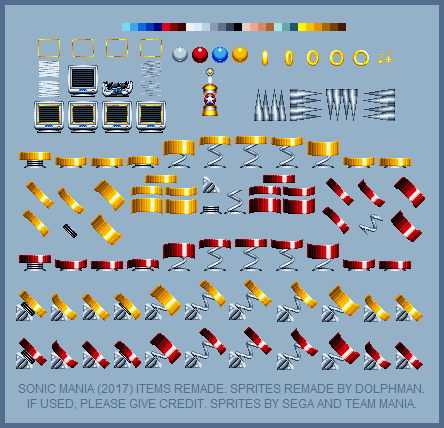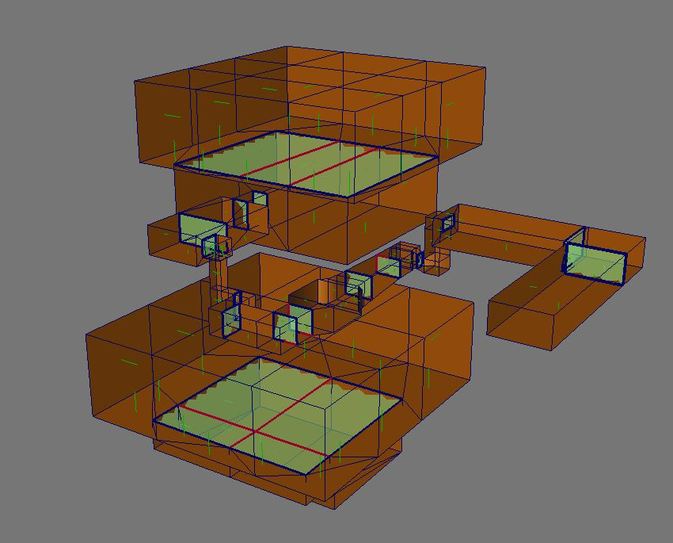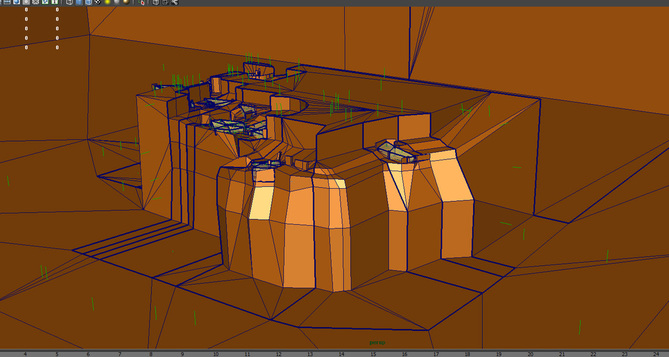Image manipulation is when someone takes and edit / alters an image using a variety of programs like Photoshop, InDesign and Illustrator in order to create an image of what they desire. They can be used for games or films/shows as animated characters or backgrounds/foreground objects and structure.
2D Concept Art – Tom Fry
Tyson Heese is the co-founder of Pagodawest Games, developers of Sonic Mania and is the lead concept artist for Sonic Mania that’s available to buy on all gaming platforms with an animated series is available to watch online (YouTube, Facebook etc). Sonic Mania features 3 playable character currently with 2 new character coming out as downloadable content (DLC) for players to buy and use in their game. Every character has their unique colors and designs, being based of different animals such as Sonic the Hedgehog who is blue, Knuckles the Echidna who is red and Tails the Fox who is yellow. While there are these characters, the game features a wide variety of different enemies and villains such as robotic animals and humans that are placed around in the games worlds for the players to deal with, with their chosen character. Every playable character have a range if facial expressions and unique walking patters and animation to tell them apart and give them personality with out them talking, such as Sonic is always standing proud with quirky moment every now and then if standing idle for so long, eventually he’ll begin to tap his feet, waiting for the player to do something.
![]()


Games and even films sometimes will require concept art to create multiple ideas of designs for characters, scenery, objects and more so they have multiple options to chose from for when it comes to creating the final design. This will require the concept artist to remain in touch with the pipeline in order to make sure that they maintain the same visual style.

![]()
3D Environment art – Marcus Lehto
All 3D games require an environmental artist to create the worlds that the players will see and to unique enough to become iconic to them. This is done within the textures in the world that gets either put on within the UV editor or can be painted on software like substance.
These images are from the game Halo 5, released by 343 industries in 2015 and is based in the far future during a war with aliens on multiple planets. The environment artist who worked on these is Tim Diaz, who also worked on the previous game Halo 4 and has 7 years of professional experience working on several forms of 3D art and tech. The engine used is costume made by a company Bungie in 2007 with the Havok physics engine. As well as art, while working on Halo he was also tasked to manage three campaign and two multiplayer levels (some images below). To do so he had to break up the levels, create triggers for effects, animation, collision and such while working on the art and design of the levels. For texturing, he uses programs like Substance, Photoshop, Zbrush. And for modeling, Maya, 3D max, Unreal and more.


User Interface – Jeff Christy
Jeff Christy is a Senior UI Artist, currently working for 343 industries and has worked on the Ui for both Halo 4 and 5. Jeff worked on a varity of UI within the games from the menu cards where players select what they want to do on the hub, to in game stuff like the hud, aim affects, radio tags, tutorial messages and more.
Although these we’re later changed in the final product, Jeff created the base design on the UI and animations for the rest of the team to work with, such as in Halo 4 (bottom video) the ability to rotate your guns in some animations, less options and others. But the overall design and look was kept the same. This was done probably due to the limitations of the Xbox 360 as they would need more memory to focus on the actual game play rather than menus. With the aiming in Halo 5 (tom video), the same thing applies. They kept the idea and designs but changed it up from the original. This was probably done more to look better since Halo 5 is on the Xbox one which has more memory than the 360.
For 2D character designs, 3D environments and UI, they all start of with original designs that are created for the developers to know what they are making. These designs cover color, font and art style, animations and more, allowing them to fully understand how much they would need to do and how much of their own work they can add in. What differentiates them is the way they are designed, 2D concept art is single images with each body moment, facial expression and others is drawn individually, this is usually done on Photoshop but can also be done on paper if the artist prefers. When the animators get around to animating the characters, they redraw the concept art but with more or less frames to suit the visual and art style. Similar things is done with 3D environments, but the artist will draw one piece or two of a location that the environment artist will recreate in engine. Environments can be created in many programs such as Unreal, Maya, Quixel Studio and more. With UI, it’s difference from 2D characters and a 3D environment is that it isn’t in the game’s world. It’s placed in front of everything by setting it as a top layer, meaning that you’ll always be able to see it, no matter where you are or go. So you’ll always be kept updates on things like you health, storage, location and more. UI can be both 2D or 3D, depending of the style of the game but a majority of the time it’s set to 2D to save on data as 3D rendering too much can cause the game to run poorly is someone uses a system that has low memory.